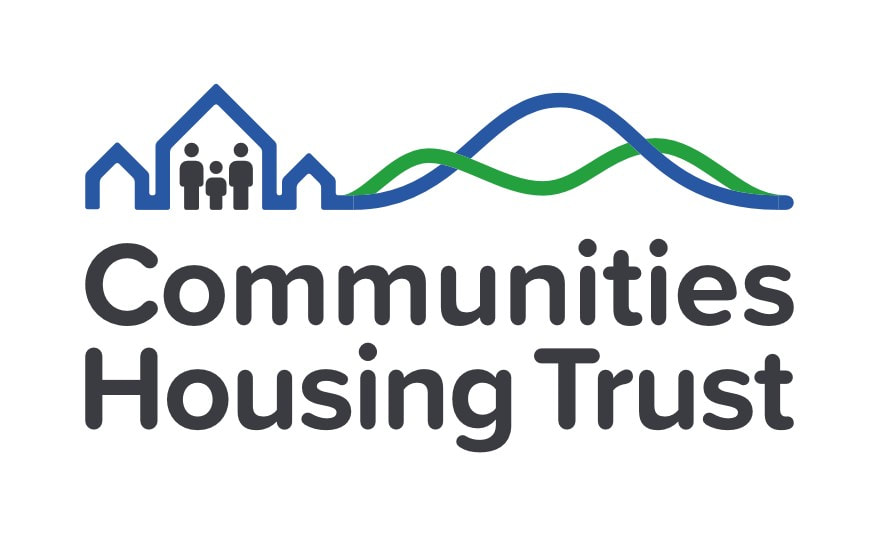|
Initial plans for the renovation of the disused Borrodale School in Glendale will be on show for community feedback on Thursday 25 August. The drop-in event at the former school from 3pm-7pm invites local residents to give input on early plans and designs for the building’s conversion to 5-6 affordable homes, which would be protected for use by local communities. The school building is in community ownership, having been purchased by the Glendale Trust with support from the Scottish Land Fund in 2014. Skye-based contractors will begin works shortly to make the building wind- and water-tight and to stop further decay, with funding from Historic Environment Scotland, the Architectural Heritage Fund, Rural Communities into Action Fund, Crown Estate Scotland and Foundation Scotland. In partnership with the Glendale Trust, the Communities Housing Trust is leading the project to renovate and convert the derelict buildings, with a focus on retrofitting and recycling building materials to minimise waste, and support and encourage rural trades. The project partners include University of the Highlands & Islands, Zero Waste Scotland, HIE, Climavore and Built Environment, Smarter Transformation. Plockton-based architect Olli Blair has drawn up initial plans for the homes, which would offer a mix of affordable tenancies allowing choice for people locally, such as social rent equivalent, mid-market rent, low-cost home ownership, or housing for keyworkers. Homes would be allocated by the Communities Housing Trust, prioritising people with a need to live or work in the area, and perpetually protecting the homes against use as holiday- and second-homes. Ronnie MacRae, chief executive of the Communities Housing Trust, said: “This is a community-led project, with local people taking a leading role in developing the community with a long-term view, and we would urge people nearby to come and share their views on the plans. We hope that the Borrodale project will act as a blueprint for community renovations to address repopulation, skills development in rural areas, reuse and recycling of materials, environmental concerns, and economic growth and opportunities.”
There are over 43,000 long-term empty homes across Scotland, and an urgent need for affordable housing. The renovation will focus on transforming an eyesore into an asset, providing housing for the local community as well as supporting economic growth of the region. Clare Gray, Chair of The Glendale Trust said: “We are very pleased with the plans and the architect’s vision to repurpose the buildings while keeping much of their original external appearance. It will be good to see work starting soon on the gable wall of the school house, as a key project milestone.” Drop in to the community consultation event at Borrodale School, Glendale (IV55 8WL) on Thursday 25 August, from 3pm-7pm. On hand to answer questions and discuss comments will be the Glendale Trust, the Communities Housing Trust, and architect Olli Blair. Feel free to download and share the event poster below: This blog is part of a monthly series about community-led housing in Scotland, jointly written by Mike Staples, Chief Executive at South of Scotland Community Housing (SOSCH), and Ronnie MacRae, Chief Executive at Communities Housing Trust (CHT). Between us we’ve worked with hundreds of communities across Scotland, facilitating well over 1,000 affordable homes. We have 43,000 long-term empty homes in Scotland[1]. We have soaring costs of building materials, and challenges of supplying them, particularly to remote or island areas. We have goals for net zero and zero waste, to help tackle the climate crisis. And we have an affordable housing crisis. Amid all this, there is an obvious starting point: use what we have already. Communities are best placed to take on projects to ‘recycle’ buildings, reusing materials and repurposing them to meet local needs. Recycling for net zero Often unattractive to commercial developers, restoring and repurposing older buildings is an important part of a more sustainable environment and meeting net zero goals. It should be considered alongside other industry priorities, including, for example, using net zero heating and energy efficiency measures, and local materials. Especially for urban areas, where new builds and green spaces are harder to come by, repurposing empty buildings is a strategic and climate conscious way to address the housing crisis. This opportunity is reflected in Community Right To Buy legislation, updated in 2018 to include ‘abandoned, neglected, or detrimental land.’[2] However, many would consider this extension underutilised, in part because of the convoluted process. CHT and SOSCH support communities through this process to bring recycling buildings into the mainstream. Costs of building materials and challenges of supply Following Brexit and the Covid pandemic, there has been a well-documented rise in costs of building materials. Prices of timber and steel increased by 79% and 77% respectively by September 2021.[3] Coupled with, for example, attempting to build on an island, and additional transport costs of materials by ferry, reduced ferry sailings due to bad or winter weather and associated delays, this is a pressing challenge. In real terms, all this has led to a 20-40% increase in development costs.[4] There is therefore an obvious case to be made, not only for supplying home-grown materials through collaborations between crofters, farmers and landowners, but for reusing and recycling as many materials as we can. A third crucial aspect is then actively tackling the skills and labour shortage, particularly keenly felt in rural areas, by creating more opportunities for implementing a recycling, circular economy approach to construction. Raising confidence and spirits Beyond these practical points, there is value in what we call ‘placemaking’ – communities having a role in shaping where they live, strengthening relationships between people and place, having pride in where you live and raising confidence for exploring what changes are possible. Many of the vacant buildings in urban areas are linked to services or businesses ending, and high street decline. Therefore these buildings are often central, visible, and can greatly affect local pride and spirits – and the economy – if they sit empty. In rural areas, the empty buildings may be schools, or houses – buildings important to generations of people. There’s often a sense of sadness at decline within the community, as an indicator of wider problems of rural depopulation. Community-led projects to re-use and re-purpose buildings are not just environmentally-conscious approaches to housing, but also approaches that can appreciate the personality, character, and history of a place where communities become responsible stewards. In doing so communities demonstrate model ways of how best to integrate historical places with their long-term future in mind. Recycling buildings provide an opportunity to integrate all of the above. Case studiesSOSCH has supported the following projects: Langholm Old Police Station: An award-winning project in which a former police station lain empty in town centre for 15 years before the Eskdale Foundation turned it into 4 affordable homes (family, single-resident, and fully accessible homes). Wigtown: the Wigtown & Bladnoch Community Initiative turned a former Bank of Scotland, which vacated the high street in 2017, into two homes and a community-run bunkhouse for visitors. Whithorn: All Roads Lead to Whithorn (ARLTW) redeveloped a former Grapes Hotel, derelict for over 30 years on the historic main street, into two family homes (with a phase two: two additional fully accessible homes at the back of the site and landscaping). ARLTW is also renovating the Town Hall. Communities Housing Trust has facilitated or is undertaking the following projects: Glendale, Skye: CHT is a key partner to renovate and convert the old Borrodale school and schoolhouse in Glendale into 5-6 affordable homes, alongside the Glendale Trust, Historic Environment Scotland, Local Energy Scotland and Zero Waste Scotland, amongst others, with a focus on reusing materials, boosting local skills and rural trades, and energy efficiency. Achiltibuie: with Coigach Community Development Company, CHT converted the old schoolhouse into 2 affordable homes for the local community, with funding support from the Nationwide Foundation and the Scottish Government’s Rural Housing Fund. It was the first successful completed project to receive RHF funds. Acharachle: CHT worked with Acharacle Community Company to renovate the old school and schoolhouse, as well as a derelict empty home, Druim Garbh. CHT developed an innovative long lease model which allowed the home to be refurbished to a high standard. In all of these cases, had the community not taken control of the buildings and led the conversion into housing, the properties would very likely remain empty and degrading. Communities are taking on a vital role and undertaking work that others will not, and must be supported in doing this important work. These projects require specialised architectural vision to reshape an existing building into unique homes with character, with support from organisations such as Historic Environment Scotland, the Architectural Heritage Fund, and Construction Innovation Centre Scotland. Challenges such as Brexit, Covid, material costs and the energy crisis are causing regulatory bodies to be more cautious, when in fact these are the exact reasons why urgent and flexible cooperation is needed whilst there is a desperate demand for more housing. Both SOSCH and CHT will continue to support communities to take on projects on empty homes and vacant buildings, as one crucial aspect of tackling Scotland’s housing and climate crises. References [1] See Scottish Empty Homes Partnership: https://emptyhomespartnership.scot/ [2] Community Right to Buy (A,N, & D): https://www.gov.scot/policies/land-reform/community-right-to-buy-abandoned-neglected-or-detrimental-land/ [3] See RICS article, 19 Nov 2021: https://www.rics.org/uk/news-insight/latest-news/news-opinion/construction-materials-cost-increases-reach-40-year-high/ [4] Communities Housing Trust projects at March 2022; own calculations. This correlates with the wider sector, see e.g. https://www.constructionnews.co.uk/supply-chain/how-sharply-rising-materials-prices-have-rocked-the-sector-28-02-2022/ Further reading
‘Not so pretty vacant’ campaign by SLC & SEPA Empty Homes Partnership Case Studies - Scottish Empty Homes Partnership You can also report an empty home here: https://emptyhomespartnership.scot/ Glendale welcomed local MSP Kate Forbes last week, as she visited the community-led renovation of Borrodale school and schoolhouse. Historic Environment Scotland and Crown Estate Scotland recently awarded grants to further develop the buildings into much-needed affordable housing. The project to restore and convert the derelict buildings into 5-6 affordable homes is led by the Glendale Trust and supported by various partners including the Communities Housing Trust, Lochalsh & Skye Housing Association, HIE, University of the Highlands & Islands, and Zero Waste Scotland. Ms Forbes visited the site to understand firsthand how the innovative approach to retrofitting the buildings for the climate crisis will also provide benefits and opportunities for the local community. The project aims to minimise waste, reuse and recycle materials, and support and encourage local rural trades. Kate Forbes MSP said: “Housing is probably one of the most frequently raised issues with me, showing how important it is, and as the constituency MSP for Skye I am well aware of the pressures locally. “If we want families, and especially our young people, to remain on the island then it is absolutely critical that they have access to warm, safe and affordable homes. “Against that backdrop, I was delighted to visit Borrodale School and meet with representatives of both the Glendale Trust and Communities Housing Trust. “They are to be congratulated for their joint initiative and I look forward to these plans becoming a reality.” In March, the project received a grant of £30,000 from Historic Environment Scotland (HES) to deliver traditional masonry and lime render work to stop the building deteriorating further and to dry it out in preparation for renovation.
HES are supporting the refurbishment and conversion of Borrodale School and Schoolhouse, particularly the climate change adaptations using traditional materials and new energy efficiency measures needed in a retrofit of an older building. Roger Curtis, Technical Research Manager at Historic Environment Scotland (HES) said: “We’re pleased to be able to support this project to provide much needed additional housing stock through the retrofit of these buildings. The school and its schoolhouse played a key role in the community and through this project will create a new chapter in their story as well as contributing to the community and our broader aims of helping demonstrate thermal upgrade to older buildings as well as providing greener housing through the reuse and retrofit of existing building stock.” A further Community Capacity grant of £20,000 from Crown Estate Scotland, delivered in partnership with Foundation Scotland, will help develop the plans for the fuel-efficient homes. The Borrodale project will act as a blueprint for community renovations to address repopulation, skills development in rural areas, reuse and recycling of materials, environmental concerns, and economic growth and opportunities. The Glendale Trust purchased the school in 2014 with funding support from the Scottish Land Fund. Further funding for the renovation and conversion plans has been given by the Architectural Heritage Fund, the Rural Communities Into Action Fund delivered by Inspiring Scotland, and HIE. There are over 43,000 long-term empty homes across Scotland, and an urgent need for affordable housing. The renovation will focus on transforming an eyesore into an asset, providing housing for the local community as well as supporting economic growth of the region. It is expected that the development will provide a mix of affordable tenures based on demand, such as social rent equivalent, mid-market rent, low-cost home ownership, or housing for keyworkers. This mix allows more flexibility for a small community, allowing for differing financial capabilities and changing circumstances. Clare Gray, Chair of The Glendale Trust said: “We are delighted that Historic Environment Scotland appreciate the value of the buildings and have granted us the funds to repair the stonework and the roof in readiness for the refurbishment. This will give the building a new lease of life and bring affordable homes to Glendale.” Ronnie MacRae, CEO of Communities Housing Trust, said: “We are delighted to have the support of Historic Environment Scotland and Crown Estate Scotland on this project. They both recognise the importance not just of the buildings, but what the buildings could mean to the future of Glendale, and the wider community. It will be an example of community-led, climate-friendly restoration which communities across the country can replicate and use to boost local skills and support a circular economy. We were very pleased to share these plans with Kate Forbes.” The disused school and schoolhouse in Glendale, Skye has received a grant of over £47,000 from the Scottish Government’s Rural Communities in Action Fund to undertake further feasibility, design and development work.
The community-led project to renovate the school and schoolhouse into 5-6 affordable homes is being led by the Glendale Trust, in partnership with the Communities Housing Trust. This project is supported by the Rural Communities Ideas into Action fund, supported by the Scottish Government and delivered by Inspiring Scotland to encourage and support innovative approaches to community-led local development in rural communities across Scotland. The Glendale Trust purchased the school in 2014 with funding support from the Scottish Land Fund. £10,000 has also been provided by the Architectural Heritage Fund towards early-stage costs. A standard renovation for the Borrodale buildings was found to be unviable, so new and innovative approaches are being looked at, particularly in terms of retrofitting for the climate crisis and to maximise benefits and opportunities for the local community. There are 39,000 long-term empty homes across Scotland, and an urgent need for affordable housing. The renovation will focus on transforming an eyesore into an asset, providing housing for the local community and supporting economic growth of the region. It is expected that the development will provide a mix of affordable tenures based on demand, such as social rent equivalent, mid-market rent, low-cost home ownership, or housing for keyworkers. This mix allows more flexibility for a small community, allowing for differing financial capabilities and changing circumstances. Clare Gray, Chair of The Glendale Trust, said: “Borrodale School and Schoolhouse are embedded in the landscape and in the collective memory of generations of people from Glendale. We are delighted that the Communities Housing Trust, the Scottish Government’s Rural Communities in Action Fund and the AHF also recognise the value of the buildings and together we can now work to create affordable housing within their walls.” Ronnie MacRae, CEO of Communities Housing Trust, said: “We are delighted to be supporting the Glendale Trust in renovating the old school, as it’ll provide much needed housing for the community. It will also be an example of community-led, climate-friendly restoration which communities across the country can replicate and use to boost local skills and economy. The homes will help ensure the community thrives into the future, and the support of Scottish Government and others are key here so we’d like to thank them for that.” Jo Robertson, Scotland Support Officer, Architectural Heritage Fund, said: “Thanks to funding from the William Grant Foundation, the Architectural Heritage Fund is pleased to provide grant towards the re-purposing of Borrodale Schoolhouse. This project will use both traditional and new technologies to improve environmental performance and will find design solutions that can be replicated to similar buildings across the Highlands.” Achiltibuie’s Empty School House Transformation Into Two Affordable Homes Welcomes New Tenants7/3/2017 A house that has lain empty for over 5 years in Achiltibuie has been transformed into two affordable dwellings thanks to an innovative funding package secured by the Coigach Community Development Company and The Highlands Small Communities Housing Trust with support from The Scottish Government, the Nationwide Foundation, The Highland Council and Highlands and Islands Enterprise. Community ownership, through the transfer of assets, of a disused schoolhouse in the remote community of Achiltibuie, Coigach, Wester Ross has now been given a new lease of life. The Coigach Community Development Company is delighted that the renovation of the old schoolhouse is now complete, with the two newly created flats due for occupation in early March. An Open Day event to welcome tenants to their new homes was held on Friday 3rd March 2017, attended by those involved in the redevelopment along with people from the village. Highlands Small Communities Housing Trust (HSCHT) project managed the development and is providing housing management services for the properties, which have been allocated to people in housing need. Ronnie MacRae, CEO of HSCHT explained: “HSCHT is delighted that the schoolhouse redevelopment is now complete. By working closely with The Scottish Government, the Nationwide Foundation and The Highland Council, this adds to the growing number of community-owned housing projects in the Highlands. The Coigach community will benefit greatly from two new fit-for-purpose affordable homes in Achiltibuie. The project demonstrates the great benefits derived from cooperation with the community and we hope to work with them on future projects to benefit Coigach.” Award-winning David Somerville Architects has redesigned the property, improving the standards with increased insulation and a responsive heating system resulting in low running costs: “With so many ex public sector houses no longer in use throughout the Highlands this project shows how affordable and energy-efficient accommodation can be made available to young families in remote communities.” The renovation was carried out by Highland based contractors, Kinellan Building Ltd. Included in the conversion was a complete internal and external redecoration, with completely new kitchens and bathrooms also being installed. Externally the overgrown garden has been landscaped to provide bin stores and a new pathway and steps leading up to the house. Windows and doors were refurbished, while new ones were installed where required. Increasing the thermal mass of the property was important to the project. To do this, the conversion incorporated the raising of the floors to lay Kingspan insulation beneath, while also placing of 100mm mineral wool insulation in all walls between bedrooms and living rooms. Roof insulation was also increased, by laying 150mm thick earthwool insulation between ties, and 100mm thick over the rafters. This, as well as the upgrading of services, wiring and lighting, as well as the introduction of new combined electric boiler and domestic hot water stores in each new flat, has created a more modern, much warmer and more energy efficient home. The Scottish Government’s new Rural Housing Fund was instrumental in funding this renovation, which is the first project to be completed through this mechanism. The fund has proved popular with communities with aspirations to own their own homes and it complements other recent interventions from the Scottish Government, such as the Scottish Land Fund, the Community Empowerment (Scotland) Act 2015 and the Land Reform (Scotland) Act 2016. Housing Minister Kevin Stewart said: “We recognise the challenges of developing affordable housing in remote rural areas and so I’m delighted that the Scottish Government was able to provide funding to this worthwhile project through the Rural Housing Fund. The successful conversion of a former schoolhouse into two homes for affordable rent will make a positive impact on this coastal community in northwestern Scotland.” HSCHT received funding of £120,000 from the Nationwide Foundation through its Decent, Affordable Homes strategy to bring long-term empty properties back into use. This funding also contributed towards the completion of another property recently, Druim Garbh, owned by the Acharacle Community Company. Sam Stewart, Head of Programmes at the Nationwide Foundation, says: “It is unacceptable that there is a shortage of decent, affordable homes in the Scottish Highlands, while at the same time there are properties standing empty. Too often local people have no realistic housing options and are forced to move out of the area they were brought up in. We are delighted that our funding has contributed towards two great homes for the new tenants. The community-led housing model used at the schoolhouse by HSCHT offers rural communities a real way to keep local people living in their communities.” Julia Campbell, Coigach Community Development Company said: “We at CCDC are thrilled to see the lights back on Achiltibuie Schoolhouse and to see it lived in once again. Lack of housing is a big challenge in Coigach and has been cited again and again by the local community as top of their "to do" list in numerous surveys and consultations. We are very grateful to our funders: Scottish Government's Rural Housing Fund, The Nationwide Foundation, and The Highland Council (who also transferred the house to the community at nominal cost as well as assisting with the development), and Highlands and Islands Enterprise who funded our legal fees and have provided ongoing support to CCDC as part of their Community Account Management programme. We'd also especially like to thank HSCHT who have supported us throughout the process and made it all possible. The first tenants will move in soon and are both valuable members of our community with local family connections here and both bring extended economic benefit to the area through their employment. On a personal level, I am particularly happy to see the Schoolhouse back in action as it was my first home, and like many in the community I'm very fond of it. This has been a real community effort too: CCDC's board is made up of a hardy band of volunteers, and local folk have really pitched in to help and support the development.” Lindsay Simpson, Lochaber, Skye and Wester Ross - Development Manager at Highlands & Islands Enterprise said: “Coigach Community Development Company is the anchor organisation for HIE’s Community Capacity Building Programme and we have been working intensively with them for a number of years. CCDC’s Community Development Plan, written in early 2012, identified housing as one of the main priorities for action. The creation of these two housing units will go a long way in providing valuable affordable accommodation in an area where housing provision is scarce and expensive. This will encourage young families to remain in the area and could provide key-worker housing. HIE is proud to support communities across the region not only realise their ownership aspirations but also, use this resource to benefit the local area”. Cllr. Isabelle Campbell, The Highland Council said: “I was delighted to attend The Open Day in Achiltibuie today to celebrate the completion of a joint venture of an empty school house transformed into two affordable homes. The funding package secured by The Highlands Small Communities Trust and the Coigach Community Development Company with support from The Scottish Government, The Nationwide Foundation, The Highland Council and Highlands and Islands Enterprise. The Coigach Community Development Company have illustrated how community ownership through transfer of assets of a disused schoolhouse can produce two affordable homes in a rural community with housing need. The development has been project managed by The Highlands Small Communities Trust. May I congratulate the Coigach Development Trust on their enterprise and vision for their community”. Since the completion of the project, it has received recognition from Shelter Scotland. Adam Lang, Head of Communications and Policy at Shelter Scotland, said: “Through our management of the Scottish Empty Homes Partnership we know that far too many private properties are lying empty while people wait years for affordable homes to rent. The Achiltibuie project is a wonderful example of what can be accomplished when a community is supported to bring an empty property back into use. It offers real hope to the many places across Scotland where people are forced to watch buildings decay when they could be transformed into much needed homes.” Adam Lang added: “Affordable housing is vital to the sustainability of communities. For places like Achiltibuie, community-driven schemes to bring empty homes back into use could play a vital role in meeting demand.”
The Highlands Small Communities Housing Trust has had previous experience with renovating empty properties in order to provide great affordable accommodation to local families and individuals in rural communities. For this reason, Laggan Community Trading Company contacted HSCHT for their assistance with the project. HSCHT managed the project, from sending out the original tender documentation and assessing submissions, right up until the property was ready for a new individual or family to move in. Leasing The Property - An agreement was put in place between Laggan Community Trading Company and the Highland Council, which stated that upon completion of the renovation, Highland Council would manage and let the property. Funding The Project - Although LCTC had some reserves to put towards the renovation project, the majority of the works was funded by Highland Council, who provided a £15,000 grant, and a £15,000 loan. The loan is interest-free, and allows for a total of 5 years before it has to be repaid. This £30,000 contributed massively to the overall renovation costs. Both the grant and loan were able to be drawn-down at various stages throughout the project. Another large benefit to making the project viable, was that due to the property being empty for over 2 years, only 5% VAT was to be charged on any works, as opposed to 20%. This proved to provide a massive reduction in the overall cost of the project. The Tendering Process - It was important to the project to use local contractors. For this reason HSCHT contacted a number of local contractors within the area to gauge who may be interested We then issued the tender documentation, before assessing and deciding on a small local contractor who would undertake the whole project along with his chosen subcontractors. The Renovation - There was a vast amount of work carried out on the property during its renovation. This included everything from massively increasing the thermal mass through additional wall and roof insulation, to complete redecoration, relining, painting and decorating and re-dressing of internal doors. Old brick cupboards were demolished, including the removal of asbestos, and a completely new kitchen was installed. Plumbing work and a complete re-wire of the property also took place. New lighting fixtures, extractor fans, fire alarms and carbon monoxide detectors were installed too. A large part of the renovation was the installing of completely new roof sarking, felt and slates. In order to increase energy efficiency of the property, new high performance uPVC double glazed windows were put in the upstairs bedroom, which previously did not have escape windows that met building standards. New storage heaters were installed throughout the property, and a woodburning stove, hearth and metal chimney liner were put in place. Externally, repair work was done to the chimney, new rainwater goods were introduced, a coal bunker was demolished, and the whole render and external woodwork was painted. Towards the completion of the renovation, Highland Council inspected the property to ensure that it was up to their standard, which highlighted a few snagging issues which were not considered originally. The project was completed in the spring of 2016 and is now managed and let by the Highland Council to a young local family. HSCHT monitored the project throughout the process, and Laggan Community Trading Company were incredibly pleased with the final outcome.
This is another great example, of how small community led groups, the Highland Small Communities Housing Trust, and local and statutory authorities such as the Highland Council can work together to turn empty properties into great affordable family homes, in areas where accommodation options are few.
In rural communities around the Highlands such as Strathmashie, people are increasingly being forced to leave their families, jobs and friends behind in search of a suitable home. In this particular case, making an affordable home available to a young family with two children, provides many benefits to the surrounding community, including increasing the local school roll. An empty schoolhouse in Achiltibuie will be transformed into two affordable dwellings thanks to an innovative funding package secured by The Highlands Small Communities Housing Trust and the Coigach Community Development Company with support from The Scottish Government, The Nationwide Foundation and The Highland Council. Community ownership of a disused schoolhouse in the remote community of Achiltibuie, Coigach, Wester Ross is to be given a new lease of life. The Coigach Community Development Company is delighted to see that the renovation of the old schoolhouse will now take place. Construction is expected to begin shortly, with the homes due for occupation by new tenants later this year. Highlands Small Communities Housing Trust (HSCHT) will oversee the development and the future housing management of the properties, which will be made available to people in housing need once the renovation is completed. Ronnie MacRae, CEO of HSCHT explained “HSCHT is delighted to be working with The Scottish Government, the Nationwide Foundation and The Highland Council, to bring about one of the many pipeline community-owned housing projects in the Highlands. The Coigach Community Development Company will benefit greatly from two new fit-for-purpose affordable homes in Achiltibuie. The project demonstrates the great benefits derived from cooperation with the community and the wider partnership of those involved.” Award-winning David Somerville Architects has redesigned the property, improving the standards with increased insulation and a responsive heating system resulting in low running costs: “Transforming the property into two flats instead of one large dwelling will maximize the potential to provide local housing for key workers and local people”. The Scottish Government’s new Rural Housing Fund is instrumental in funding this Achiltibuie renovation. The fund is already popular with communities with aspirations to own their own homes and it complements other recent interventions from the Scottish Government, such as the Scottish Land Fund, the Community Empowerment (Scotland) Act 2015 and the Land Reform (Scotland) Act 2016. Housing Minister Kevin Stewart said: “We recognise the challenges of developing affordable housing in remote rural areas and so I’m delighted that the Scottish Government is able to provide funding to this worthwhile project through the Rural Housing Fund. This will contribute to the Scottish Government’s commitment to build 50,000 new homes across Scotland over the next five years”. HSCHT received funding of £120,000 from the Nationwide Foundation through its Decent, Affordable Homes strategy. This funding also contributed towards the completion of another property last year, Druim Garbh, owned by the Acharacle Community Company.
Sam Stewart, Head of Programmes at the Nationwide Foundation, says: “A lack of decent affordable housing in very rural areas is highly detrimental; however community-led housing initiatives - such as this one at Achiltibuie - ensure that the right sort of affordable homes are created to suit the specific housing needs of people in the local community.” The Coigach Community Development Company said: “This is really good news for Coigach. This funding means work can now start on the old Achiltibuie Schoolhouse and we'll soon have two new flats to rent in the community. Lack of affordable housing is a real problem here and even just two new households will make a big difference for the better. It’s a really positive step and we are delighted to be working with Highland Small Communities Housing Trust on this project and grateful to our funders who are making it all possible”. - Julia Campbell, Local Development Officer. |
CHT BlogThis blog features a variety of CHT’s developments and projects located throughout the central and northern Scotland. It also includes the latest news and updates regarding the Trust. Archives
September 2023
Archives
September 2023
Categories
All
|


















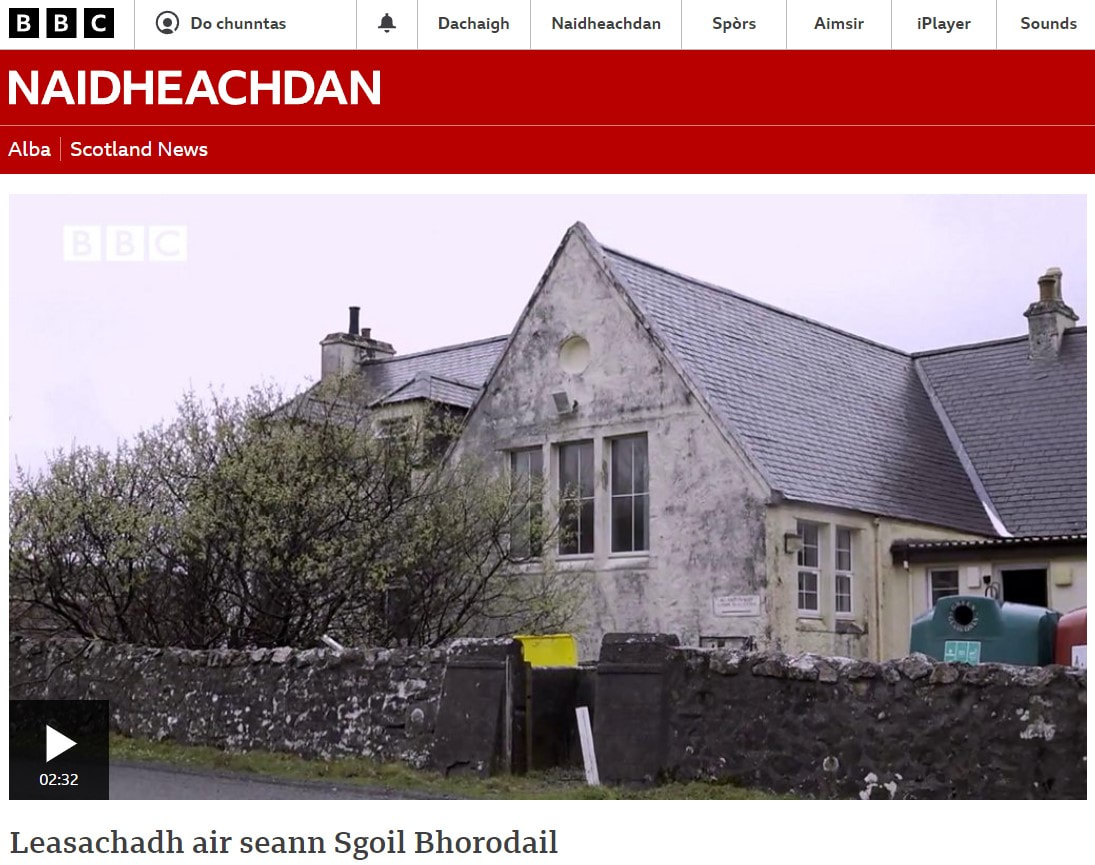




































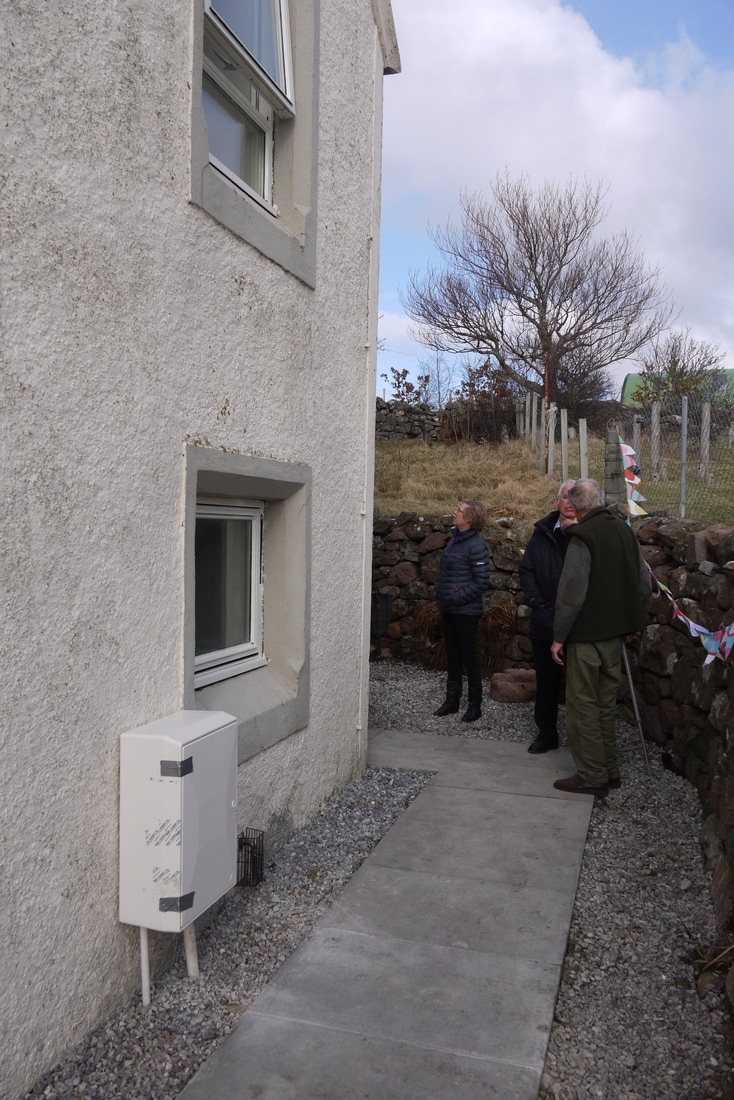








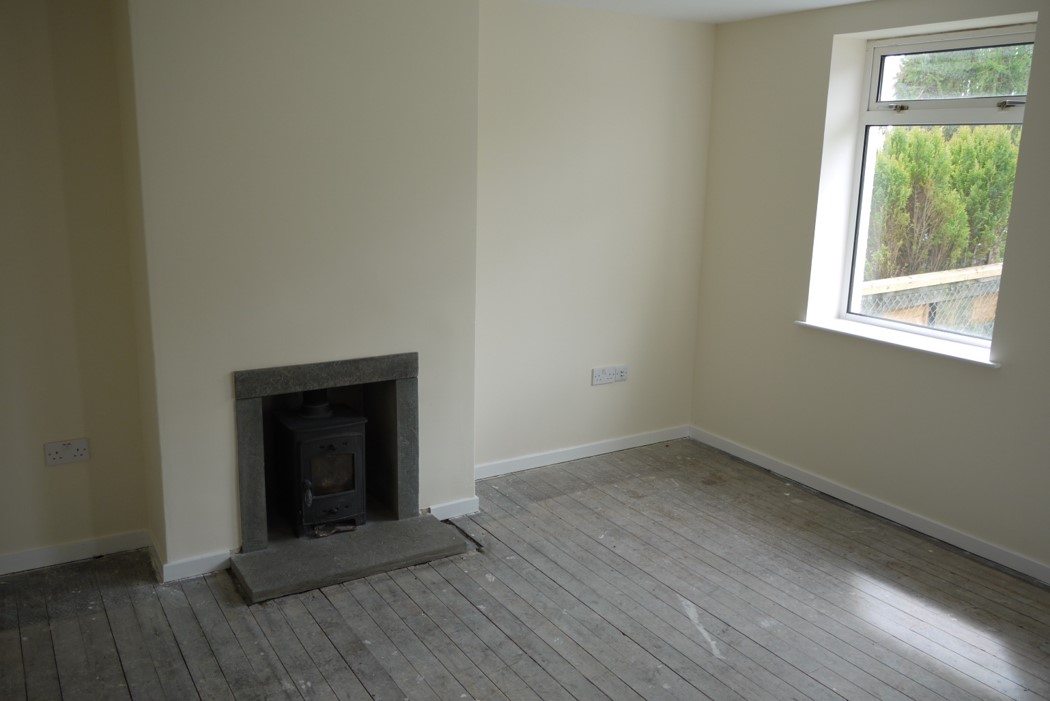










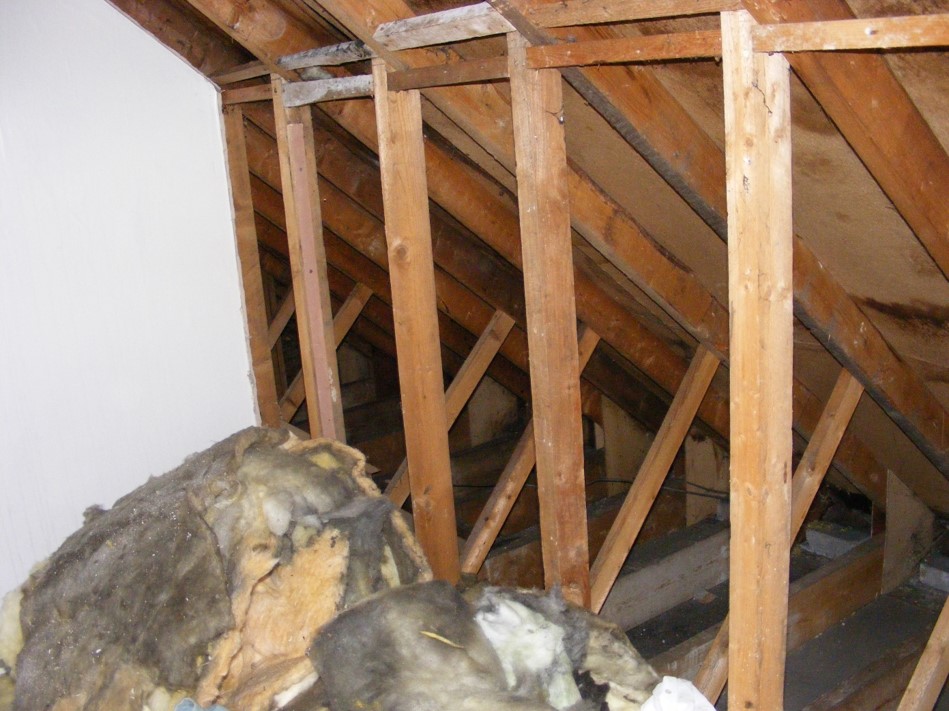



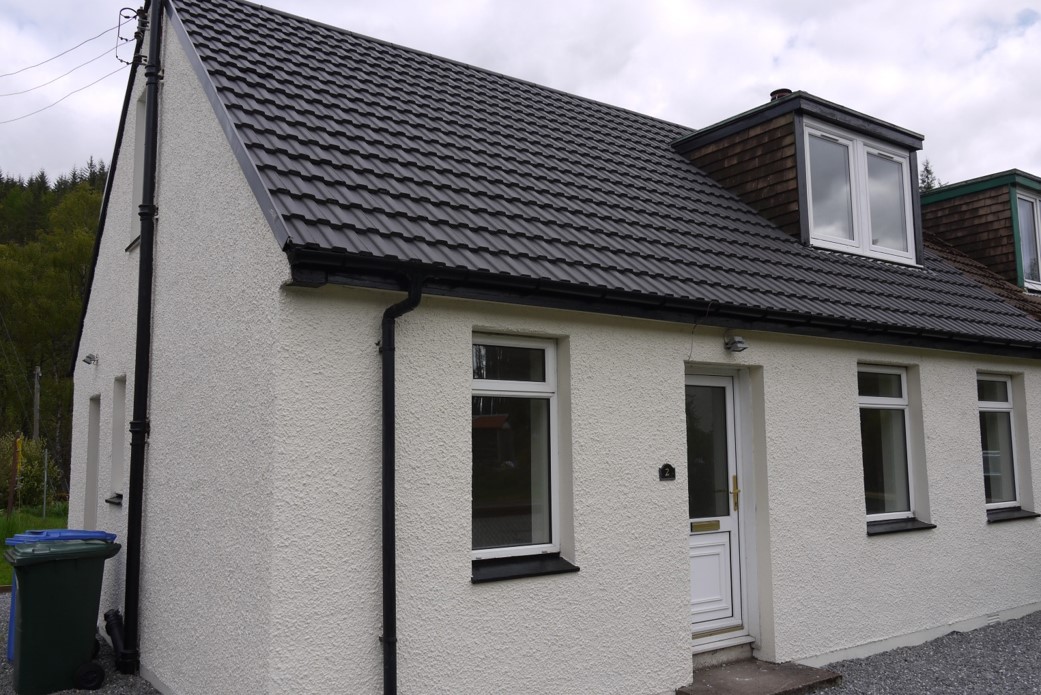






 RSS Feed
RSS Feed
